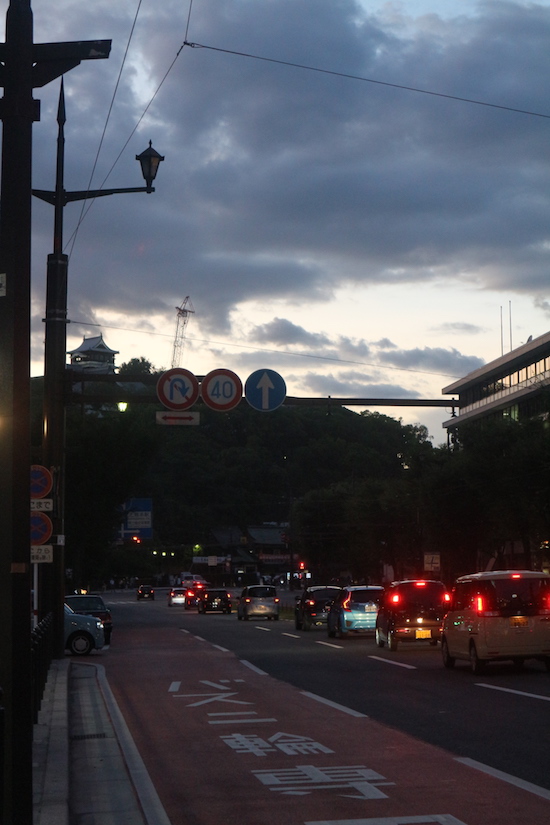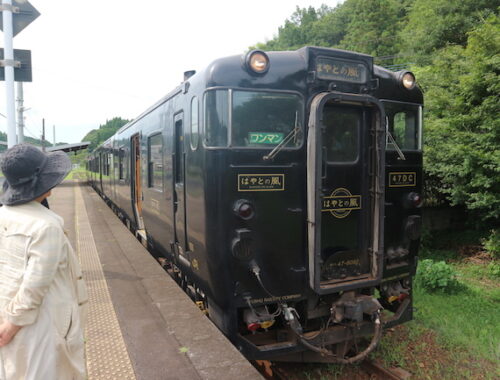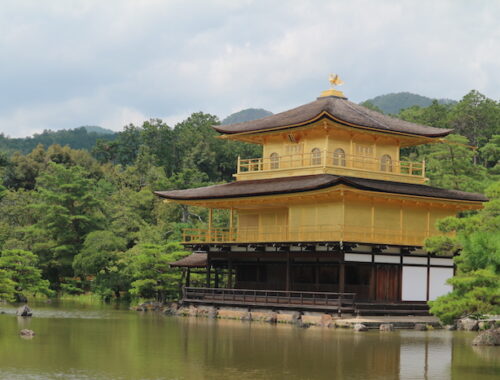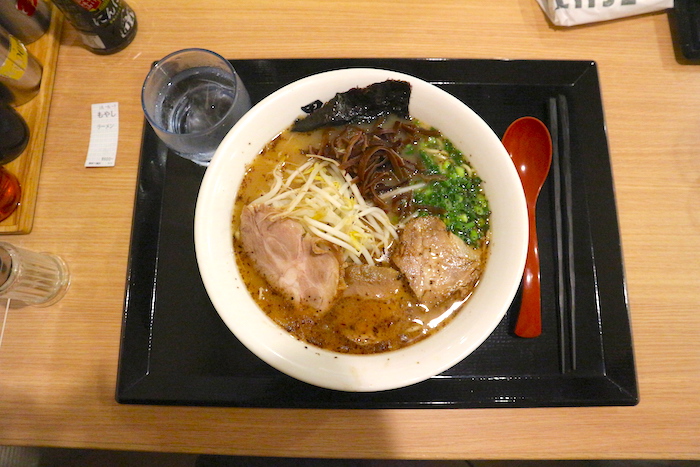
2 weeks in Kyushu with the Japan rail pass. Part 2 of 6: Day 4 – 7 Nagasaki and Kumamoto
Day 4: Travelling to Nagasaki – Atomic Bomb Museum and Peace Park – Dejima and city night views
We started using our rail pass.
Our initial plan was to visit Tozan shrine in Kami-Arita on our way to Nagasaki, but it was too hot and we each had a large suitcase and decided to go straight to Nagasaki. We took the 10:55 Kamome train from Hakata and arrived in Nagasaki at 12:49.
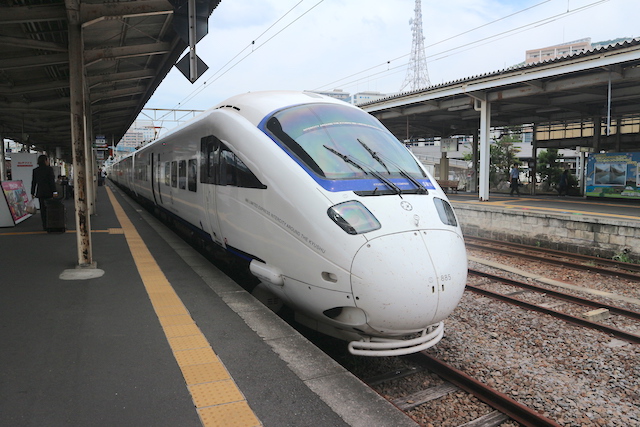
The tourist information centre is just outside the train station and we bought a day tram ticket for ¥500.
We first checked in at our hostel, Casa Noda. It is a hostel, but their private room has own toilet and bathroom (around ¥10000 per night per room). People were nice, everything was clean and location was perfect. I really enjoyed staying at Casa Noda.

After a short lunch recess at the hostel, we headed outside. We took the tram and first went to Nagasaki Atomic Bomb Museum. At ¥200 entry, this is an incredibly well thought out museum with a very clear focus on the future of world peace. Possibly one of the most meaningful museum experiences for me.

We then walked towards the peace park, to find the famous Peace Statue of course. BIG WARNING if anyone is planning to go to the peace park after the museum like we did. Once reaching the hypo-centre and ruins of Urakami Cathedral, do not take a right for the park, it will be a mini mountain climb leading to some random edge of the park. Facing the hypo-centre, take a left and you will soon find a escalator, go up and you will be welcomed by the fountain of peace. City of Nagasaki, please get rid of that sign ‘Peace Park’ pointing to the direction of mountain-climbing-random-edge-of-the-park.

We took the tram and went to Dejima. During the Edo period, it was the only place of direct trade between Japan and foreign countries. We didn’t go inside as it was nearing the closing time, but enjoyed the relaxed atmosphere by the river.

It was getting dark and time to enjoy the night view of Nagasaki. We heard about ‘Glover Sky-road’, a free public lift going up to the back of Glover Garden where one can enjoy a nice view of the city from there. The lift was only a couple of minutes walk from Ishibashi tram stop (which is only one stop after Oura Cathedral stop).
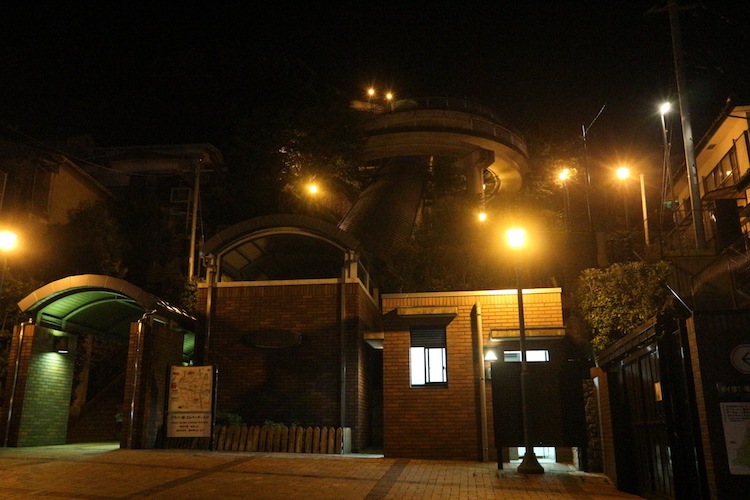

Our great plan was to have dinner at China Town. We hopped back on a tram and got there just before 9pm… and everything was shut. We live in London where people easily start their dinner at 9pm, but I guess that’s none of city of Nagasaki’s concern. We bought some food from a super market and went back to our hostel.
Day 5: The Shrine Gate that stands on one leg – City sightseeing (spectacles bridge, Oura cathedral…)
It is good to know that the one day tram pass can be bought at certain hotels. This morning we bought ours from a large chain hotel called Toyoko-inn just opposite our hostel.

We visited Sanno Shrine where you will find the one-legged torii gate. This gate was cut in half by the blast of the atomic bomb, but still stands on ‘one leg’ (a single column). The torii gate stands in a quiet residential area, undisturbed and still, as a part of people’s everyday life – it’s incredibly moving.

Walking on, at the entrance to the shrine are the camphor trees that were also significantly damaged in the explosion. Despite being scorched and stripped of all leaves, they too survived and are still growing. Pieces of broken glass and small rocks can be seen in the hollow of the trees. Going further, the shrine is so still, quiet and green. Sanno Shrine is located less than one kilometre away from the hypo-centre. Visiting Sannou Shrine and seeing the one-legged torii gate and surviving trees was such a moving experience. If you are coming to Nagasaki to visit the museum and the peace park, please make the time to also visit Sanno Shrine. If I am to name one place that people absolutely must visit whilst in Nagasaki, it would be here.
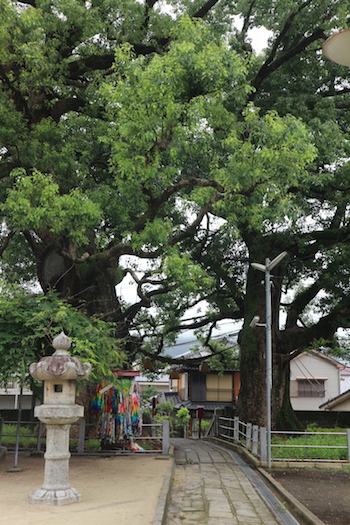
C heard about a good tonkatu (pork cutlet) restaurant near Sannou Shrine. He really enjoyed his tonkatu lunch at Bunjiro.

We then continued with our city sightseeing; bought kasutera cakes at Fukusaya,

saw the spectacles bridge,

had a coffee break at Turu-san Coffee, went to Oura Cathedral but it was already closed (must’ve been about 5pm?), bought more kasutera cakes at Bunmedo, bought our dinner at Lawson and went back to our hostel.
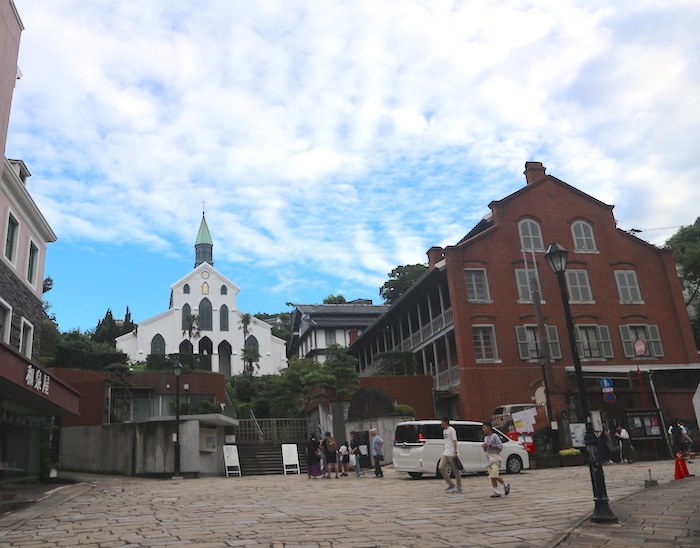
Day 6: Travelling to Kumamoto – exploring Kumamoto city centre – Kumamoto ‘black’ ramen
Today we’re heading to Kumamoto. We checked out our hostel and walked to the station (about 5minutes walk). We had coffee and mini doughnuts at Mister Donut before taking the 11:20 Kamome train.

We changed the train to Sakura shinkansen at Shin-Tosu station and arrived at Kumamoto at 13:22.

We checked in at our hotel and went for a stroll.
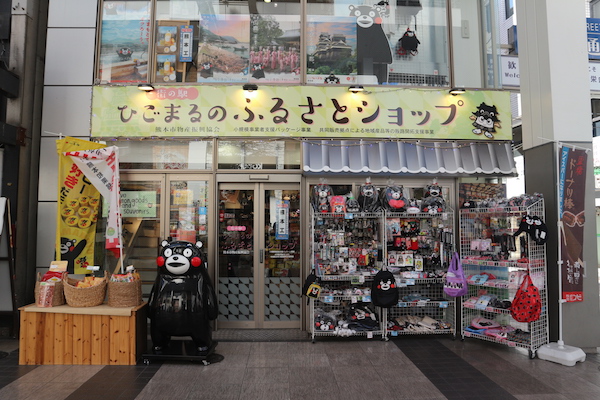


We had dinner at Kokute. Kumamoto ramen is characterised by its burnt garlic flavour.

We went back to the hotel and sampled the kasuteras we bought in Nagasaki.
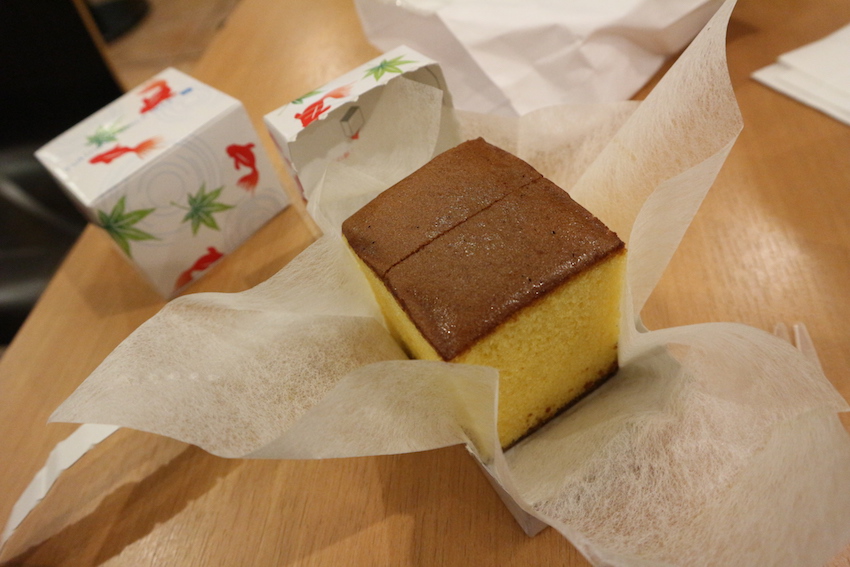
Day 7: Suizenji park – sampling Kumamoto dishes – Kumamoto castle – local sweet ‘ikinari dango’
After breakfast at the hotel, we went to the central bus station and bought a day pass called ‘waku waku pass’ which can be used for trams and some busses around the city area, ¥700.

We first went to Suizenji park. ¥400 entrance fee. Beautiful Japanese garden, but the August heat was way too much for me!

We then went to Sakura-no-baba Jyosaien for lunch, an Edo period castle town themed complex just below Kumamoto castle. It is undoubtedly touristy, but filled with some nice shops and restaurants and actually really fun. C had a sea urchin croquette, ¥390. He said it was really good!

We went to a restaurant called Yamami-jyaya and enjoyed a variety of Kumamoto specialities. C, the horse meat set meal and myself and C’s mum dagojiru dumpling soup and takana rice ball. Service was attentive and friendly and everything was really tasty.

Kumamoto castle was seriously damaged in the earthquakes of April 2016. At the time of our visit in August 2019, visitors were only able to see a glimpse of the castle from surrounding areas. Still, the castle was really beautiful to see and hopefully our small tourist money will contribute to its restoration.

We took a bus to Kumamoto station where we browsed some shops and had a local sweet called ikinari dango; sweet potato and sweet bean paste wrapped in a thin skin of rice flour dough. We tried dark sugar, purple sweet potato and the original flavour; all were freshly made and really tasty. They had two different sizes and I bought small ones for ¥100 each, lager ones were ¥150.

Our hotel was located in the busy and bustling area called Shimodori. I enjoyed an evening stroll and did some souvenir shopping before going back to the hotel for the night.
